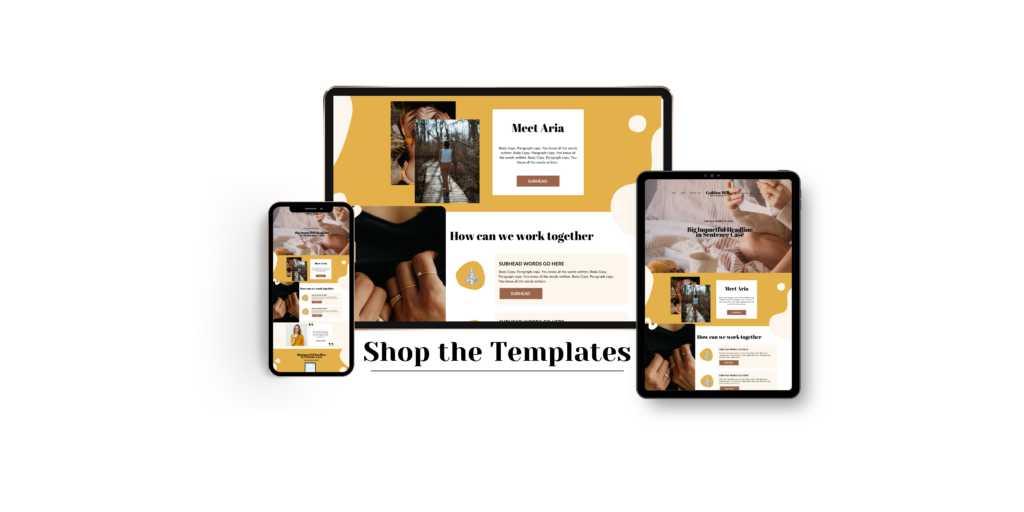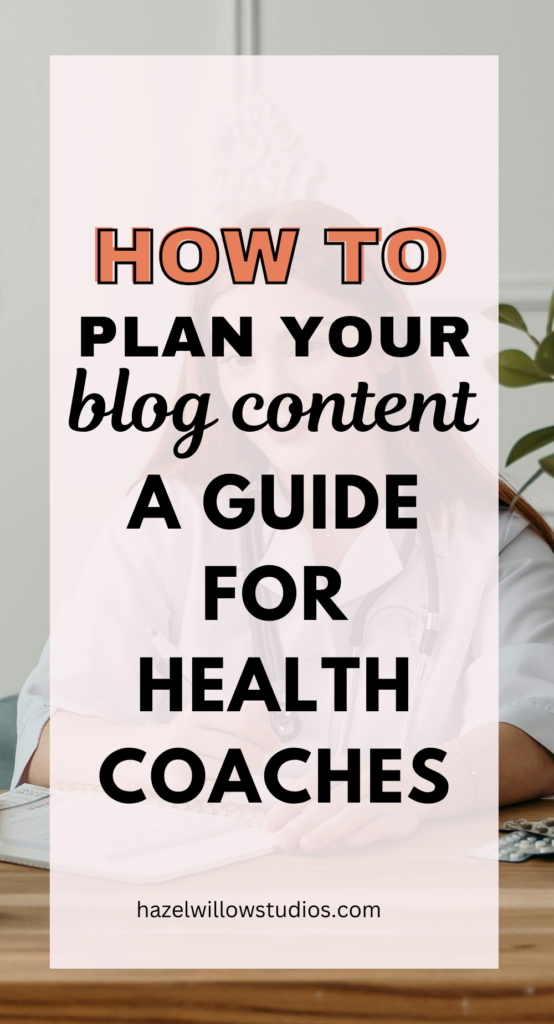Table of Contents
Health Coach Blog Planning: A Simple Strategy (+ Free Template)
Create a strategic blog that attracts ideal clients and builds your wellness brand
You sit down to plan out content for your health coaching business, and suddenly your mind goes blank. Sound familiar? Maybe you find yourself recycling the same few topics, wondering if your posts are actually connecting with potential clients. Or worse – you’re spending hours creating content that seems to disappear into the social media void without generating any real leads.
It’s not that you don’t have valuable insights to share. As a health coach, you’re bursting with knowledge about wellness, nutrition, and transformation. The challenge isn’t your expertise – it’s translating that expertise into strategic content that attracts and converts your ideal clients.
The truth is, the most successful coaches in the wellness space aren’t necessarily creating more content; they’re creating smarter content with a clear strategy behind it. They understand that effective content isn’t about random posting or following the latest trends – it’s about creating a clear path that guides potential clients from their first interaction all the way to becoming a paying client.
But here’s the really good news: you don’t need to spend hours every week planning content or hire an expensive marketing team. What you need is a simple, repeatable system for planning content that speaks directly to your ideal clients and guides them toward working with you. With the right structure and strategy, your content can become a powerful tool for attracting aligned clients and growing your business.
Let’s turn your content from scattered posts into a strategic tool that builds your business.
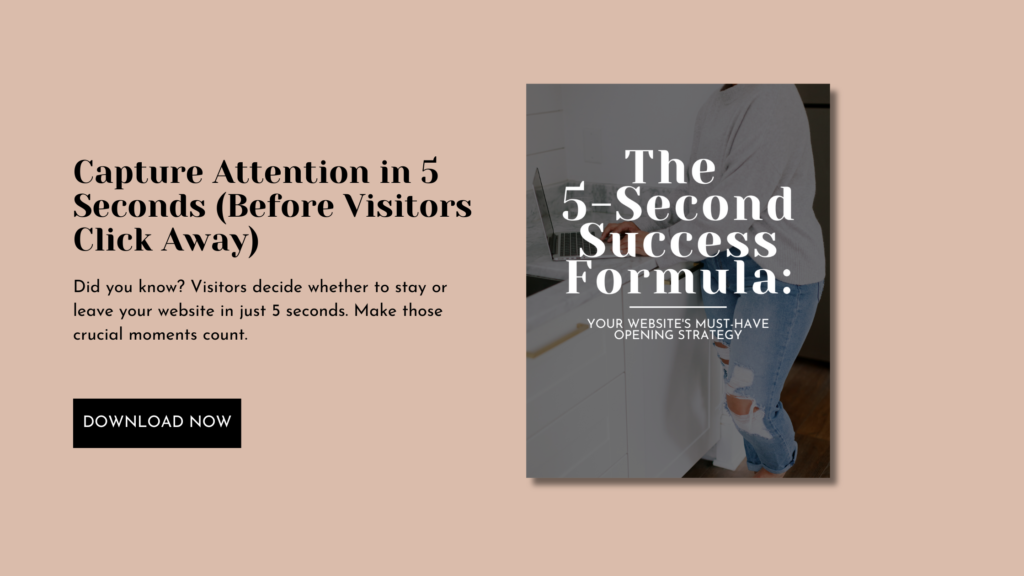
Why Strategic Content Planning Matters (And It’s Not All About Social Media)
Breaking Free from the “Be Everywhere” Myth
The wellness space can make you feel like you need to be everywhere online – posting daily Instagram reels, writing long-form captions, trying to keep up with Tik Tok dances, and somehow still finding time to actually coach your clients. But here’s a refreshing truth: you don’t need to be on every platform to build a successful health coaching business.
Your Website: The Heart of Your Content Strategy
What you need is a strategic approach centered on creating valuable, long-form content through your blog. While social media can be useful, blogging is your most powerful platform for establishing expertise and attracting clients. Each blog post becomes a permanent asset that works for you 24/7, attracting organic traffic and showcasing your knowledge in a meaningful way.
Your website isn’t just another place to post content – it’s your content hub where you can dive deep into topics your ideal clients care about. When you focus on creating comprehensive, value-packed blog posts, you’re building a library of resources that demonstrate your expertise far better than any quick social media post could.
Think about it: in a single blog post, you can thoroughly explain a concept, share real examples, address common questions, and guide readers toward solutions. This depth not only serves your audience better but also gives you content that can be repurposed across other platforms. One well-written blog post can fuel weeks of social media content, newsletter segments, and downloadable resources.
Finding Your Perfect Content Mix
Think of your blog as the foundation of your content strategy. Each blog post should address a specific challenge or question your ideal clients have. From there, you can extract key insights, tips, and quotes to share across other platforms. This approach ensures all your content stems from well-thought-out, valuable pieces rather than trying to create new content for every platform.
The Smart Way to Use Social Media
When you start with strong blog content, social media becomes much easier to manage. Instead of creating new content from scratch every day, you’re sharing highlights and insights from your blog posts. Take a single post and turn it into multiple social shares: key quotes become carousel posts, main points transform into quick tips, and concepts can be explained in short videos.
Creating a Content Ecosystem That Converts
Your blog posts serve as the cornerstone of your content strategy, with each piece working to attract and nurture potential clients. When someone discovers you through a thorough, helpful blog post, they’re more likely to see you as an expert worth following – and ultimately, worth hiring. Every other platform then works to drive traffic back to these valuable resources on your website, creating a sustainable ecosystem that continues working for you long after publication.
Creating Your Blog Content Pillars
The Foundation of Strategic Blogging
Before you start filling your content calendar with blog post ideas, you need a clear framework for what you’ll write about. Content pillars are your answer – they’re the core themes that will shape your blog strategy and showcase your expertise in a focused, intentional way.
Identifying Your Core Blog Topics
As a health coach, you have knowledge that spans the entire wellness spectrum – from gut health to stress management. But trying to blog about everything dilutes your message and makes it harder to establish true expertise. Instead, choose 3-4 main topics that directly connect to your coaching programs or services. These become your blog pillars – the key themes you’ll explore in-depth through your posts.
For example, if you specialize in hormone health, your blog pillars might be:
- Stress Management & Hormones
- Nutrition for Hormone Balance
- Sleep & Recovery
- Movement for Hormone Health
Each pillar then becomes a category on your blog, helping readers (and search engines) understand your areas of expertise.
Creating Depth Within Your Pillars
The magic of blog pillars is how they let you go deep while staying focused. Take that hormone health example: under “Stress Management & Hormones,” you might write posts about:
- Understanding the cortisol-hormone connection
- Morning routines for hormone balance
- Stress-reducing techniques for better hormone health
- Signs stress is affecting your hormones
Each post builds upon the last, creating a valuable resource library for your readers while establishing your expertise in this specific area.
Building Your Editorial Strategy
With your blog pillars established, planning content becomes much simpler. Instead of random post ideas, you’re creating a structured body of work that demonstrates your expertise. This approach ensures you’re consistently building authority in your key areas while giving search engines plenty of related content to understand your specialty.
If you’re feeling stuck for ideas within your pillars, AI tools like ChatGPT or Claude can help brainstorm specific post topics. Try this prompt: “I’m a health coach specializing in [your niche]. Based on my blog pillar about [specific pillar], suggest some specific post topics that would be valuable for my audience.” Remember: use these suggestions as inspiration, but always filter them through your professional expertise.
Connecting Posts to Conversions
Your blog pillars should naturally lead to your offerings. Each post should include a relevant call to action that makes sense for that topic. A post about stress signs might lead to your hormone testing consultation, while a nutrition-focused post could point to your group program. This strategic alignment ensures your blog isn’t just informative – it’s actively working to grow your business.
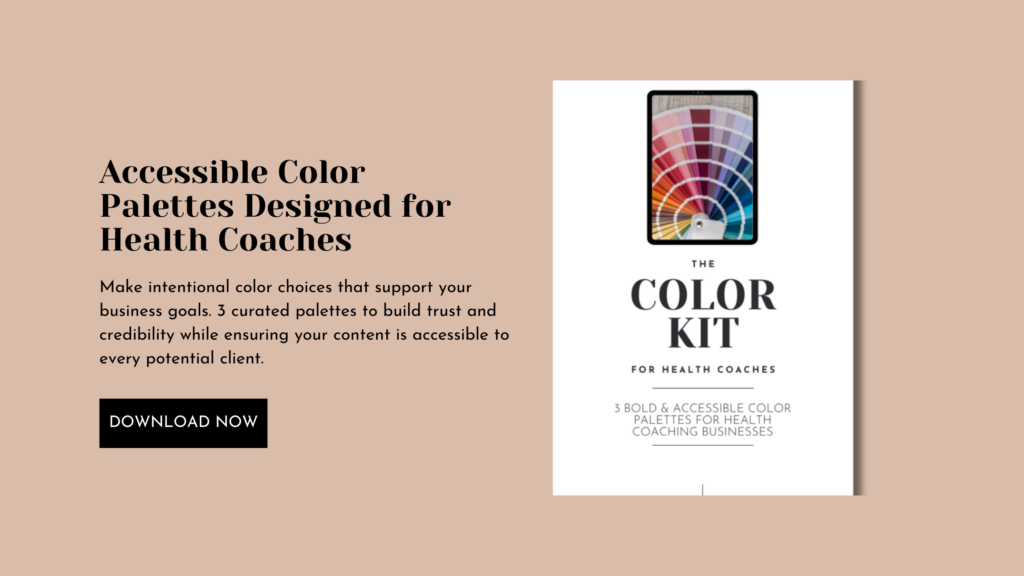
Finding Your Sustainable Blogging Rhythm
Quality Over Quantity
Let’s address the question every new blogger asks: “How often should I publish?” While some might tell you to post multiple times per week, the truth is that one well-researched, comprehensive blog post per month is more valuable than four rushed, surface-level articles. Quality and consistency matter more than frequency.
Setting Your Publishing Pace
The key to successful blogging isn’t posting frequently – it’s posting consistently. Choose a schedule you can maintain long-term, whether that’s once a month or twice a month. What matters is that your readers know they can count on fresh, valuable content from you on a regular basis.
When you’re just starting out, try to at least commit to one thorough blog post per month. This gives you time to:
- Research your topic thoroughly
- Create comprehensive, valuable content
- Edit and refine your writing
- Design any needed graphics or resources
- Plan your promotion strategy
Making Each Post Count
Since you’re creating fewer, better posts, make each one substantial. Aim for comprehensive articles that thoroughly address your readers’ questions and concerns. A well-written 1,500-2,000 word blog post that deeply explores a topic will serve your audience (and your SEO) better than several shorter, less detailed posts.
Planning Your Blog Content
Once you’ve decided on your posting frequency, plan your content several months ahead. If you’re posting monthly, map out the next three months of blog topics, making sure to:
- Rotate through your content pillars
- Align topics with seasonal needs
- Include a mix of beginner and more advanced content
- Create natural paths between posts
The Art of Strategic Repurposing
After publishing each blog post, you can break it down into smaller pieces of content for other platforms. But remember: your blog is the foundation. Social media, newsletters, and other content should drive traffic back to these valuable blog posts, not replace them.
A single comprehensive blog post can provide:
- Several email newsletter topics
- Weeks of social media content
- Ideas for lead magnets or free resources
The goal is to make your blog posts work harder for you, not to create more work for yourself.
Your Blog Content Calendar Template
A Simple System for Consistent Blogging
The best content calendar is one you’ll actually use. While there are complex project management tools available, let’s focus on a simple, effective approach specifically designed for planning your blog content. This template helps you plan your main blog posts first, with optional sections for extending that content to other platforms.
Monthly Blog Planning Template
MONTHLY BLOG PLANNER
Month: ________________________________
Monthly Theme: ________________________
Primary Goal: _________________________
BLOG POST
Title: _________________________________
Content Pillar: ________________________
Main Keywords: ________________________
Target Publish Date: ___________________
Core Message: _________________________
Research Needed: ______________________
Call to Action: ________________________
Content Extension Plan: □ Newsletter Article □ Social Highlights (3-5 key points) □ Lead Magnet
Opportunity Notes: _________________________________
Example of the Template in Action
Here’s how this might look filled out:
Month: January Monthly Theme: Sustainable Health Habits
Primary Goal: Build email list with new lead magnet
BLOG POST 1
Title: “Why Most Health Goals Fail (And How to Make Yours Stick)”
Content Pillar: Habit Formation Main Keywords: sustainable health habits, health goals, habit building
Target Publish Date: January 5
Core Message: Success comes from small, consistent changes
Research Needed: Success rate statistics, psychology studies
Call to Action: Free habit tracker template
Content Extension Plan: □ Break into daily tips for newsletter series □ Create quote graphics for key statistics □ Develop habit tracker as lead magnet
Making Your Blog Calendar Work
Your blog calendar should guide your content creation without becoming another task to manage. Use it to:
- Map out your main blog topics in advance
- Track which pillars you’re covering
- Plan strategic calls to action
- Coordinate your content extensions
- Monitor what resonates with your audience
Remember, this template is a starting point. Adapt it to match your blogging style and business needs. The goal isn’t to create more work – it’s to make your blogging more strategic and sustainable.
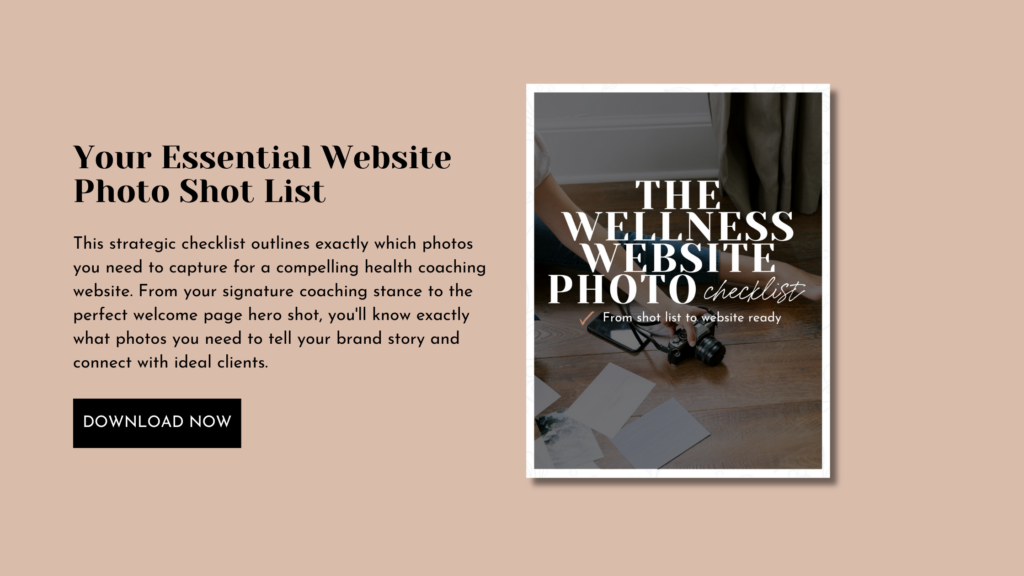
Implementation Tips
Master the Art of Batch Writing
Instead of writing posts one at a time, set aside dedicated blocks for different parts of the blogging process. You might spend one morning researching and outlining your next three posts, another day writing rough drafts, and a third session editing and adding images. This focused approach helps maintain consistency in your voice and makes the writing process more efficient.
Build Your Blog Buffer
Nothing derails a blogging schedule faster than unexpected life events or busy periods with clients. Stay ahead by keeping at least one completed blog post in your back pocket at all times. When inspiration strikes, write an extra post for your content bank. This buffer gives you breathing room and helps maintain your consistent publishing schedule.
Create Strong Internal Links
Each blog post should connect naturally to others on your site. As you write new posts, look for opportunities to reference and link to your existing content. For example, a post about morning routines might link to your article about stress management, which could then guide readers to your post about hormone balance. This web of content keeps readers engaged and highlights the depth of your expertise.
Structure Posts for Success
Make your blog posts easy to read and remember by:
- Opening with a compelling hook
- Using clear subheadings to guide readers
- Including relevant examples and stories
- Breaking up long paragraphs
- Closing with a clear call to action
Your website template should support this structure with clean typography and plenty of white space to make reading enjoyable.
Optimize for Search Engines
Help potential clients find your blog posts by:
- Choosing one main keyword for each post
- Including that keyword naturally throughout your content
- Writing compelling meta descriptions
- Using descriptive URLs
- Adding alt text to images
Track What Works
Pay attention to which posts resonate most with your audience. Look at:
- Which topics get the most engagement
- What types of headlines attract more clicks
- Which calls to action convert best
- How long people spend reading each post
Use these insights to refine your future blog content strategy.
Remember, successful blogging isn’t about perfection – it’s about consistently providing value to your audience while building your authority in your niche. Start with these fundamentals and adjust as you learn what works best for your unique audience.
Setting Your Blog Strategy in Motion
You now have a clear roadmap for creating strategic blog content that attracts and converts your ideal clients. But here’s the thing: even the most valuable blog posts need the right foundation to truly shine. Your website needs to be more than just a place to host your blog – it should be a strategic tool that helps visitors discover, engage with, and act on your content.
That’s exactly why I created website templates specifically for health coaches that include:
- Dedicated blog sections designed for easy reading and sharing
- Strategic layouts that guide visitors through your content
- Clear paths from blog posts to your services
- Space for lead magnets and email capture
- Built-in features to showcase your expertise
Ready to give your blog content the home it deserves? Check out my template shop to find the design that fits your vision.
